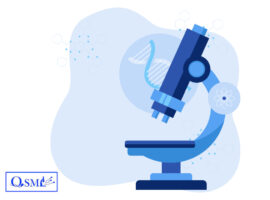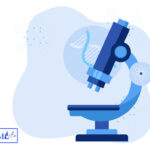Dr Viv Perry presented a session on the Gold standard sperm assessment from frozen thawed straws at the AVA annual conference in May.
The Key Topics covered in this session included:
- What should I receive as an assessment of quality of a frozen thawed straw sample?
- How does it relate to fertility?
- Does it differ from assessment of fresh sperm?

What am I looking for when the straw is checked?
The Routine laboratory tests of
- Viability
- Morphology
- Concentration/dose
These remain the mainstay of straw frozen thaw semen evaluation
The 3 checks that are used at QSML are based upon their relationship with fertility as 70% of variation in non return rates can be explained by:
- motility at thaw and after 2 hrs incubation,
- percent normal sperm and
- percent intact acrosome after 2hr incubation
(Phillips et al., 2003, Oliveira 2013, Morrell 2018).
Why does the assessment of the frozen thawed semen differ to fresh semen?
- Sperm from a straw have suffered perturbations caused by processing. This may result in changes which were not present in the fresh semen. The difference between these iatrogenic effects and those that were present prior to processing must be determined.
- Processed sperm may have already been assessed for some factors such as head abnormalities so the importance of other traits- for example motility- become more related to fertility in the frozen thawed sample.
- A stress or viability test is applied to the straw (usually incubation for 2hrs) this may yield very different results to the initial thaw results for PIA and motility.
Motility of the frozen thawed sample is assessed by % progressively motile as well as the RATE of movement:
Vigor of motility RATE scoring system
A subjective evaluation of the rate of progression of spermatozoa .
0 = no movement
1 = slight tail undulation or vibration without progression
2 = slow progression, including stop and start motion
3 = steady progressive motion at moderate speed
4 = rapid progressive motion
5 = very rapid progressive motion in which cells are difficult to follow visually.
Spermatozoa will be moving at different speeds and the score assigned will pertain to the rate of the majority of spermatozoa.
Theriogenology minimum standard thresholds for motility are:
0 hr = 25% motile at a rate of 3
2 hr = 15% motile at a rate of 2.
Viability of the sample is also assessed by percent intact acrosome at thaw and after 2 hours incubation using 1000x phase or DIC.
Theriogenology minimum standard thresholds for PIA are:
PIA (% Intact acrosomes) at thaw 0 hr: 60 %
After 2 hr incubation: 40 %
Morphology assessment therefore differs in the examination of the thawed sample as this PIA must be completed separately. This means that there is no category for swollen acrosome in the morphology assessment as there is in the examination of fresh semen.
The relationship of these traits to NRR rates should be more widely known and the importance of incorporating the stress (viability/incubation) tests is one aspect that is often excluded despite being relatively easy to perform.
Australia aims to maintain the gold standard approach to sperm assessment. To achieve this, national standards should be upheld amongst laboratories and these standards understood by the practitioners and industry that use them.
PIA images; intact and non intact acrosomes post thaw at x1000 DIC
A = swollen acrosome, B = missing acrosome, C = normal acrosome








